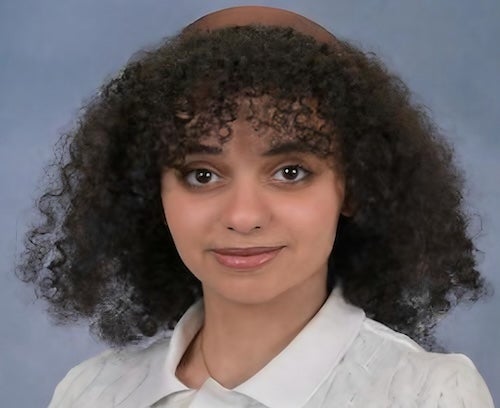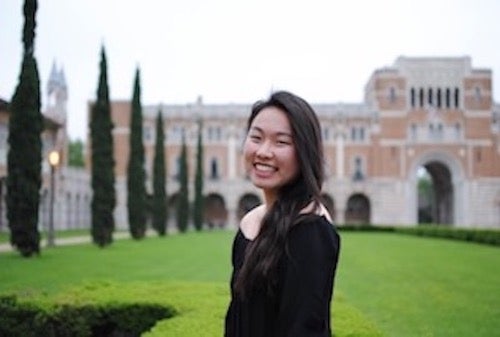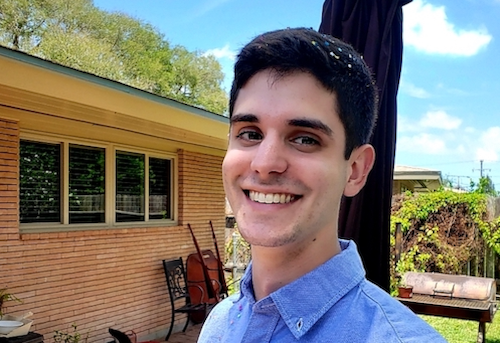 Wed Timraz, '25
Wed Timraz, '25
I came into Rice as a history major with very little historical background and lots of curiosity. I took Latin courses, learned about Britain’s monarchies, the medieval Middle East, and started to get a feel for my interests and passions. I heard about the Medieval and Early Modern Studies program and felt that it perfectly aligned with my interests- in fact, by the time I thought to officially take it up as a minor, I had already completed the major requirements without noticing. I hadn’t planned it, but I was naturally drawn to the program’s offerings across several departments. The MDEM program helped me discover a love for Art History and the Renaissance, and introduced me to the birth of modern politics. The MDEM program has allowed me to approach history with a truly interdisciplinary lens, and the professors affiliated with the program are some of the most passionate and curious people I’ve ever had the pleasure of meeting. They encourage knowledge and exploration endlessly, and have helped me pursue every one of my interests, no matter how obscure. I’ve been able to study Latin, research how the portraits of late medieval and early modern British monarchs denote the different forms of power they emphasised throughout their reigns, and learn about the continuities of life in the Middle East from the early 1500s to the modern day through the study of a diary written in Makkah immediately following the Ottoman takeover. I started my studies at Rice as a History major, and am graduating as a double major in History and MDEM, with minors in Art History and Politics, Law, and Social Thought- disciplines I would not have explored to the extent that I did if it weren’t for this program. It has had a huge impact on me, and has helped me develop countless new passions and interests. I know that wherever my future studies take me, the insatiable curiosity I developed over the course of this program will be carried with me.
 Kristen Hickey, '20
Kristen Hickey, '20
When given the chance at Rice, I prioritized enrolling in courses that fascinated and challenged me--overwhelmingly, these ended up being courses offered through the Medieval & Early Modern Studies program. The interdisciplinary focus of the program broadened my perspective enormously, and encouraged me to adopt a multifaceted approach to projects that has served me well even outside of academia.
The courses and professors involved in the MDEM program fostered, above all, a spirit of curiosity and responsibility in my approach to medieval worlds. I often found myself intrigued by the introduction to material in lectures and readings, and was encouraged to learn more outside of the classroom. In the stories, records, and artwork that I studied, I found powerful connections to the realities of our modern world. I learned to be aware of the biases that run implicitly (and sometimes, explicitly) through pre-existing scholarship and modern assumptions of the medieval world. Perhaps most importantly, I learned how to engage with my own biases and reevaluate my own arguments when needed.
My work and experience with the MDEM program has helped me envision a path forward in my career and personal life that values my interests, from archaeology and history to creative writing. The interdisciplinary nature of the program opened new doors for me, introduced me to people who lived centuries ago, and taught me creative ways to approach questions with no clear solution. While I expect the medieval world to continue to play a significant role in my future, I know that regardless of where I go next, I am a more critical thinker, more compelling writer, and more empathetic person because of my time in the MDEM program at Rice.
 Haelee Chin, '19
Haelee Chin, '19
My appreciation of history began when I read my first historical fiction book as a child. It was a Royal Diaries book about Queen Isabella of Castile. However, when I came to Rice as a freshman, I never would have thought that I would end up double-majoring in Biochemistry & Cell Biology and Medieval & Early Modern Studies. I strongly believe that we can learn many lessons from history, and the humanities perspective I have gained through the Medieval and Early Modern Studies program has been very valuable to a STEM student like me. I’ve been able to learn about historical research methods and take a variety of classes from different disciplines, such as art history and English. One of the most interesting projects I worked on for a class was a study on medieval manuscript illuminations of Caesarean sections. While writing the paper, I began to realize that the significance of the medieval C-section extends far beyond science and into the religious, legal, and ethical facets of medieval Europe. As I am also interested in studying medicine in the future, this realization about the medieval C-section inspired a similar thought process when it came to medicine. This intersection of history and medicine is where my interest in the subjects has flourished. To me, both fields are about connecting the threads between shared stories to learn more about the person and his/her/their environment.
The experience of researching the medieval C-section encouraged me to pursue an independent study about medieval medicine the following semester. This introduced me to an area of study called the social history of medicine, or how health, disease, and healing function within a historical context. I was surprised to discover that there are both professors and physicians that have studied this field, and this gives me something to think about for my future goals. I believe that being a part of the Medieval Studies program has given me a valuable perspective that has and will continue to inspire me wherever my future leads!
 Robert Williamson, '19
Robert Williamson, '19
The Medieval and Early Modern Studies program at Rice University transformed the way I approached my academics. The MDEM program, by promoting interdisciplinary approaches to learning, allowed me to take a multifaceted look at the source material that fascinated me. It helped me synthesize two of my central interests – history and anthropology – into a cohesive path toward understanding the medieval past. When I wrote my history honors thesis, my experience in the MDEM program allowed me to answer questions I didn’t think possible since it encouraged me to use methodologies outside of isolated disciplines. Both archaeological theory and art history informed and complemented how I approached historical problems. For example, when I was concerned about understanding how European knights professed their identity in the late Middle Ages, answers came from unlikely places. Beyond written history, art history gave me a corpus of material culture to explore, and archaeology taught me how to interpret questions of identity and personhood in the early fifteenth century. This interdisciplinary approach made an initially uninteresting medieval tomb effigy come to life. It gave a voice to stones, and a heart to the pages of manuscripts. This crucial interdisciplinary approach nurtured by Rice’s MDEM program means students can attack a problem from infinite different perspectives. By combining history and anthropology, I could see things I never imagined before. The Rice MDEM program not only educates students about the medieval world but, more importantly, equips them with insightful, rigorous, and creative ways of thinking as they pursue careers beyond the hedges.

